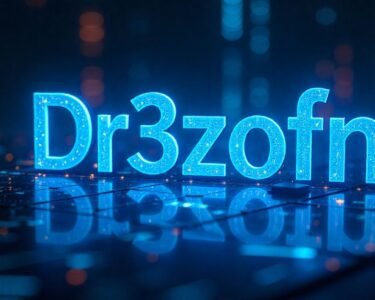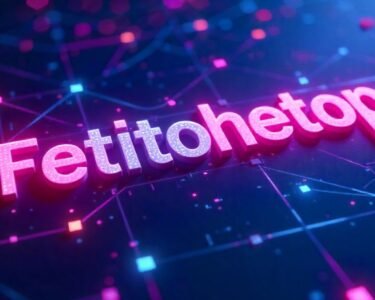Introduction
Trust has never been more important in the modern digital economy. Whether it’s supply chains, smart contracts, or legal documents, we need to verify authenticity, ensure data hasn’t been tampered with, and maintain a transparent record of changes.
Enter iCostamp, a next-generation system that blends digital sealing, timestamping, auditing, and physical tracking into a unified framework. It’s more than just a tool, it’s a trust infrastructure.
From blockchain and ICOs to logistics, healthcare, and digital credentials, it is helping redefine how we authenticate and verify in both digital and physical worlds.
What Is iCostamp?
It is a multi-purpose platform and concept that can refer to:
- A digital sealing and cryptographic timestamping system
- A physical tracking tag or IoT sensor embedded in products for environmental logging
- An auditing and verification solution for ICOs, NFTs, and decentralized applications
- A compliance tool for industries dealing with regulations, anti-fraud, and data provenance
At its core, it’s designed to guarantee that key events or data whether in a contract, a token launch, or a shipping container are authentic, tamper-proof, and verifiable.
Three Faces of iCostamp
1. Digital Timestamping & Sealing
It allows digital files (docs, contracts, transactions) to be stamped with:
- A cryptographic hash
- Metadata (time, location, identity, file version)
- Blockchain anchoring for immutability
Use Case
A law firm timestamps its contracts, including signer identity and version. In disputes, authenticity is provable.
2. Physical Smart Tags & IoT Tracking
iCostamp tags are embedded in high-value shipments or sensitive items like vaccines.
They monitor
- Temperature, humidity, shock, tampering.
- Asset location and transit condition
- Event logs are synced to the cloud or blockchain.
Use Case
A pharmaceutical company uses it’s tags to monitor vaccine shipments, ensuring they meet cold chain standards.
3. Blockchain/ICO Audit & Trust Platform
![]()
For decentralized projects, It acts like a credibility layer, offering:
- Smart contract audits
- Token project scoring (transparency, code quality, team identity)
- KYC/AML compliance checks
- Immutable timestamping of whitepapers, roadmaps, and major disclosures
Use Case
A startup launching a token submits its code and roadmap to it. The resulting score and audit badge help attract investors.
Why iCostamp Matters in 2025
Scams, counterfeits, and data manipulation continue to plague our world, necessitating both earned and verifiable trust.
iCostamp responds to this need by offering
- Tamper-proof digital proof
- Environmental data for assets in motion
- Transparent, public audit logs for blockchain projects
- Standardized scoring models to compare project health.
- Legal and regulatory support with timestamped records
The inner workings of iCostamp are explained
Digital Sealing & Timestamps
- Data is hashed (e.g., using SHA-256).
- Metadata is bundled with the hash.
- The stamp is stored on a blockchain or timestamp authority.
- Future verification compares stamps to current hashes for integrity
Physical Tags Process
- Sensor-equipped trackers log conditions during transit.
- Tamper-evidence features Notify if packaging is opened.
- Events (departure, border scan, delivery) are stamped and verifiable.
Blockchain/Audit Platform Workflow
- The project submits a code and documents.
- Automated and manual security audits occur.
- Risk scoring and timestamp reports are generated.
- Reports are made permanently available on-chain or on dashboards.
- Token launches, milestones, or team changes receive updates
iCostamp Token Trust Score
| Score | Trust Level | Interpretation |
| 90–100 | Excellent Trust | Reviewed, audited, active community |
| 70–89 | Moderate Trust | Some disclosures missing, but low major risks |
| < 70 | Low Trust | High risk. Poor docs or unverifiable claims |
Investors use these scores for risk assessment, while exchanges may require audits as listing criteria.
Cross-Industry Applications
| Industry | iCostamp Use Case |
| Legal & Government | Timestamped contracts, licenses, public records |
| Blockchain & Web3 | Smart contract audit, ICO scoring, DAO governance stamping |
| Supply Chain | iCostamp tags track cold-chain items (food, pharma) |
| Identity & Credentials | Universities stamp degrees or certificates to prevent forgery |
| NFTs & IP | Digital art gets timestamped for ownership proof and revision history |
| Finance & Compliance | Proof of disclosures or compliance reporting in financial documents |
Challenges & Limitations
Although it is a powerful tool, it faces several challenges
- Standards Fragmentation: Competing hash formats or chains
- Device Costs: Physical tags increase logistics expenses.
- Legal Uncertainty: Blockchain stamps are not yet accepted everywhere.
- Privacy Concerns: Metadata may expose sensitive personal info.
- Audit Fatigue: Instead of completing complete DD, investors can rely too much on platform badges..
- Risk of Misuse: Projects misuse audit logos without real verification.
Mitigation Strategies
- Use open standards (e.g., W3C DIDs, verifiable credentials)
- Employ zero-knowledge proofs and selective disclosure
- Rotate keys and run audits continuously, not just at launch
Future of iCostamp
Here’s where the platform and industry is headed
Trends to Watch
- AI-Driven Audits: Faster, more profound code reviews with ML
- Decentralized Identifiers: (DIDs) integrated into stamps
- IoT + Blockchain Fusion: More smart tags feed blockchain data.
- Cross-Protocol Portability: Audits & stamps recognized across ecosystems
Best Practices for Using it
| For Projects | For Investors |
| Submit audits before fundraising | Check audit scores AND read the report |
| Transparently timestamp each update | Verify timestamp integrity on-chain |
| Select reputable audit providers | Use multiple platforms for project checking |
| Incentivize ongoing auditing post-launch | Don’t rely on score alone — do your homework |
FAQs
What does it actually do in simple terms?
It creates verifiable “stamps” for data whether it’s a contract, a crypto project, or a sensor event ensuring that it happened when, how, and by whom it claims. These stamps can’t be tampered with and are often anchored to the blockchain.
Is it only for crypto and blockchain projects?
No. While it’s extremely useful in blockchain (for ICOs, smart contract audits, etc.), it also applies to supply chains, legal documents, credentials, IoT tracking, and regulatory compliance.
Does an iCostamp audit guarantee a project is safe to invest in?
Not entirely. It greatly reduces risk by increasing transparency and proving authenticity, but it’s not a substitute for proper due diligence, market analysis, and risk assessment.
Do I need special hardware or software to use it?
For digital stamping, a web dashboard or API integration suffices.
For physical tracking, you’ll need iCostamp-compatible smart tags, which are available with sensors.
Is it legally recognized?
In many jurisdictions (e.g., under the eIDAS regulation in Europe), time-stamped and digitally signed documents are legally accepted.
Conclusion
As digital systems become increasingly interconnected and decentralized, the need for verifiable trust is more urgent than ever. From blockchain token launches to sensitive supply chains and legal documentation, organizations across industries are facing rising pressure to prove authenticity, integrity, and compliance. By offering a versatile, multi-layered solution that integrates digital stamping, blockchain anchoring, IoT tracking, and auditing frameworks into a single, reliable ecosystem, iCostamp takes on this difficulty head-on.
What makes it especially relevant in 2025 is its cross-industry versatility. In the world of Web3, it’s becoming a gold standard for investor confidence, helping verify smart contract integrity, developer transparency, and token legitimacy. Meanwhile, in areas like logistics, healthcare, and law, it’s physical tags and timestamp technologies help keep important assets and documents safe by providing real-time tracking and proof that they haven’t This dual ability to protect both digital data and physical goods sets it apart from traditional verification and auditing tools.




